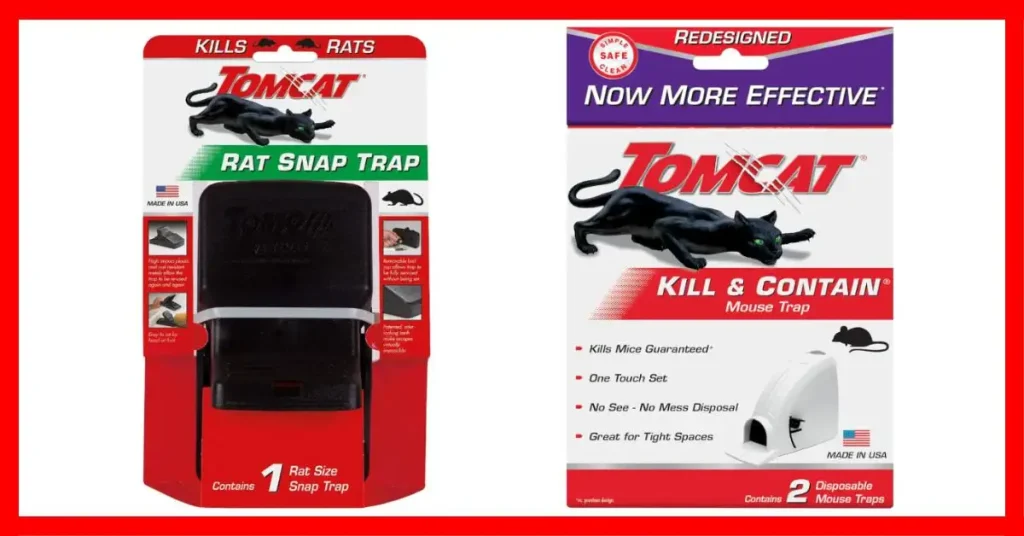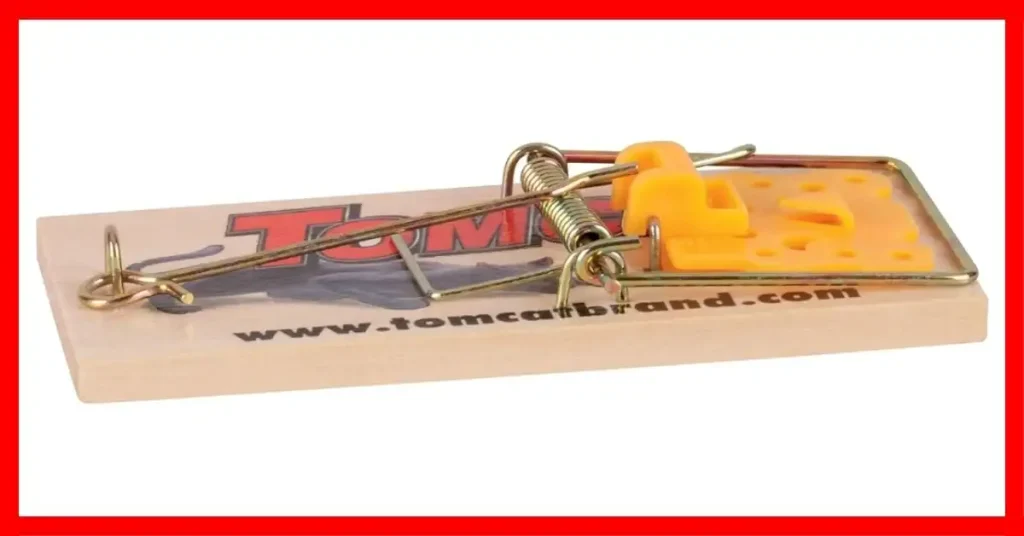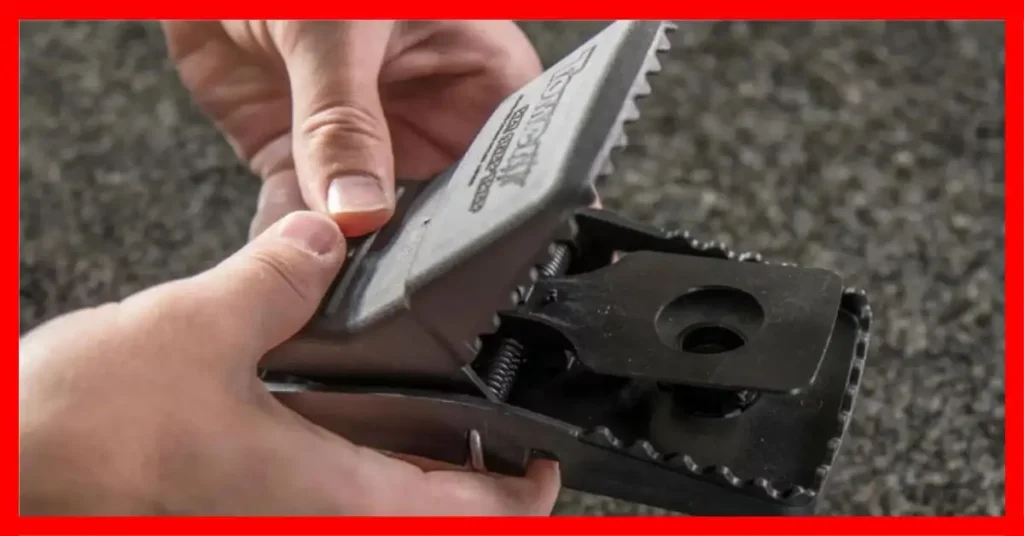Rats are smart and fast. Getting rid of them takes more than luck. I’ve tried many traps, from wooden snaps to electric ones, to find which rat trap is most effective. Each has its pros and cons. What works best depends on where the rats are and how you feel about mess or reuse. In this guide, I’ll share what I learned, what really works, and how to pick the best rat traps for your home.

What Makes a Rat Trap Effective?
A good rat trap does more than just catch a rat. It must work fast, safely, and reliably. Quick answer: traps that snap hard and are placed right usually catch rats best. Even the best trap can fail if you don’t use it correctly.
Kill speed and reliability matter most. A fast trap stops the rat instantly. Slow or weak traps can fail and make a mess. I once bought a cheap snap trap. The first rat nudged it and ran away. It was messy and useless. Strong traps work much better.
Ease of setup and safety is key. You want a trap that is easy to load. It should not snap on your fingers. Traps that are hard to use often sit unused. Quick answer: simple, safe traps get used more and catch more rats.
Reusability and cost are important too. Some traps last years. Others are one-time use. For big infestations, reusable traps save money and are ready when you need them.
Hygiene and mess control make a big difference. Traps that are easy to clean keep your home less gross. Quick answer: covered traps or electric traps reduce mess and stress.
Finally, placement matters. A great trap in the wrong spot catches nothing. Rats travel along walls. Place traps near droppings, gnaw marks, or corners. Quick answer: follow their paths to catch them.
In short, an effective trap is strong, fast, safe, reusable, clean, and well placed. Even the best trap fails if you ignore these basics.
The Main Types of Rat Traps (And How They Compare in Real Life)
Rats are smart, but traps can beat them if you pick the right type. Quick answer: snap traps are the most reliable, but other traps work well depending on where you use them.
1. Snap Traps – The Classic and Most Reliable Choice
Snap traps are simple and fast. They kill rats instantly with a strong spring. Quick answer: high-quality snap traps catch rats reliably.
I use these in my garage and barn. They are cheap, easy to reset, and catch even big rats. The Tomcat Rat Snap Trap is my favorite. It’s strong and reusable.
Pros:
- Fast kill
- Reusable and cheap
- Easy to set
Cons:
- Can be messy
- Needs proper placement
- Not for the squeamish
2. Electronic Rat Traps – Clean, Quick, and Humane
Electronic traps use a quick electric shock. Quick answer: best for clean, no-touch kills indoors.
I’ve tried the Victor Electronic Rat Trap and the Tomcat Electronic Mouse Trap. They are great for kitchens or basements. Just bait it, set it, and wait. Some models reset automatically.
Pros:
- Quick, no-touch kill
- Clean and less smell
- Good indoors
Cons:
- More expensive
- Needs batteries or power
- Can’t fit very big rats
3. Enclosed “Kill & Contain” Traps – No Mess, No Sight
These traps hide the rat inside. Quick answer: perfect if you don’t want to see or touch the rat.
I used the Tomcat Kill & Contain Mouse Trap near my kitchen. It worked well. Rats were gone, and cleanup was easy.
Pros:
- No mess
- Safe for kids and pets
- Easy to reset
Cons:
- Bigger than simple snap traps
- Must check often
- Costs more
4. Live-Catch and Humane Rat Traps
Live traps catch rats alive. Quick answer: best for humane control. You still need to release them far away.
I’ve tried humane traps. They work but need regular checking. Rats can escape if not monitored. The Kensizer Humane Trap is safe and easy to use.
Pros:
- No kill
- Safe around kids
- Can release rats
Cons:
- Must release carefully
- Slower results
- Less reliable for many rats
5. Glue Traps – Not Recommended
Glue traps are sticky boards that hold rats. Quick answer: not humane and often fail. Rats suffer, and they may catch other small animals.
Better choices are snap or electronic traps. They are faster and cleaner.
Pros:
- Cheap
Cons:
- Inhumane
- Messy and stressful
- Often ineffective
My Top Picks (Tested and Trusted)
After years of dealing with rats in my garage and shed, these are the traps that worked best. They’re simple, fast, and reliable.
Tomcat Rat Snap Trap
This is the one I trust most. It’s strong, quick, and easy to use. I’ve used it in garages, barns, and even the shed. It works again and again without breaking. The best part? It’s cheap and reusable. If you want power and value, this is the one to get.
Victor Electronic Rat Trap
Think of this as the high-tech option. It kills fast with a clean electric shock. You never have to see or touch the rat. I keep one in the basement, and it’s been solid for months. It’s perfect for kitchens or indoor spaces where you want no mess.
Tomcat Kill & Contain Trap
This one’s great if you don’t want to deal with the sight of a dead rat. Everything stays inside. I used it near the pantry, and it worked quietly overnight. It’s clean, simple, and safe to toss away after use.
Kensizer Humane Trap
If you don’t want to kill the animal, try this one. It catches rats alive so you can release them far away. I’ve used it in the garden when I didn’t want to harm anything. It’s easy to set, safe to handle, and kind to wildlife.
Each trap fits a different need. The Tomcat Snap Trap is best overall. The Victor Electronic Trap is ideal for clean, indoor use. The Kill & Contain Trap keeps things neat. And the Kensizer Humane Trap works for those who prefer a no-kill method.
👉🏿👉🏻 Check Latest Price and Offer at Amazon 👈🏻👈🏿
👉🏿👉🏻 Check Latest Price and Offer at Amazon 👈🏻👈🏿
👉🏿👉🏻 Check Latest Price and Offer at Amazon 👈🏻👈🏿

How to Set and Place Rat Traps for Best Results
To catch rats fast, put your traps along walls, near corners, or where you see droppings or chew marks. Rats move close to walls for safety and use the same paths every night. When traps sit in those tracks, your odds go way up.
At first, I made the mistake of placing traps in the open. Days went by with no luck. Once I slid them behind my tool chest, I caught two that same night. A small change made a big difference.
Always wear gloves when setting traps. Rats smell everything. If they pick up your scent, they’ll stay away. I learned that the hard way. When I switched to gloves, they took the bait almost right away.
Use only a small amount of bait. A dab of peanut butter or Tomcat attractant gel works best. I used to pile it on, thinking more would help. It didn’t. The rats just licked it clean. A pea-sized bit is plenty.
Don’t count on one trap to fix the problem. Rats are smart and breed fast. I set at least three traps in small spaces and five or more in big ones. More traps mean faster results.
Peanut butter or Tomcat gel beats cheese every time. It smells stronger and sticks better, so the rats stay long enough to trigger the trap.
Here’s a quick list to remember:
✅ Place traps near droppings or chew marks.
✅ Set them along walls or behind appliances.
✅ Wear gloves to hide your scent.
❌ Don’t overload bait.
❌ Don’t rely on one trap for a big problem.
Catching rats is part skill and part patience. Watch their trails, move traps if needed, and stay consistent. Once you find the right spots, you’ll start seeing results fast.
Common Mistakes People Make With Rat Traps
Even the best trap can fail if it’s used the wrong way. Most people miss simple things that make a big difference. I’ve made those mistakes too, and fixing them changed my results overnight.
A common mistake is using the wrong size trap. Rat traps and mouse traps may look the same, but they work very differently. A mouse trap is too small and weak for a full-grown rat. I learned that when I found a sprung mouse trap with no catch—just a smear of peanut butter. If you’re dealing with rats, always pick a trap made for rats.
Placement is another big one. Rats don’t like open areas. They stay close to walls and dark corners. I once lined up traps across my garage floor and caught nothing. When I moved them along the walls, I caught two in one night. The right spot makes all the difference.
Old bait is another problem. Peanut butter dries fast and loses its smell. When that happens, rats walk right by it. I now check my traps every few days and add a fresh dab. It keeps the scent strong and the trap ready.
Touching traps barehanded can also stop them from working. Rats can smell human scent easily. I used to skip gloves and wondered why traps stayed empty. Once I started wearing disposable gloves, the difference was clear—they took the bait faster.
And finally, don’t expect results right away. Rats are smart and careful. They may take a few days to approach something new. Be patient and keep traps in place. Once they feel safe, they’ll go for it.
Avoiding these small mistakes—wrong trap size, poor placement, dry bait, human scent, and impatience—can turn a frustrating job into a quick win. When you think like a rat, you’ll catch them fast.

Which Rat Trap Is Most Effective (Final Verdict)
If you’re looking for the trap that works best in most homes, go with a snap trap. It’s simple, strong, and proven. I’ve tested all kinds—electronic, enclosed, and live traps—and the old-school snap trap still wins for overall effectiveness. It kills fast, resets easily, and costs little.
Electronic traps come in a close second. They’re great if you want a clean, hands-free experience. I keep one in my kitchen, and it’s done the job without any mess. Just plug it in, bait it, and let it work.
If the idea of seeing a trapped rat makes you uncomfortable, a kill and contain trap is your friend. It hides everything inside. I once used one under the sink, and it worked quietly—I didn’t even notice until the light changed on top.
For those who prefer not to harm animals, live traps are the humane option. They catch and hold without injury. You’ll need to release the rat far away, though—at least a few miles—or it might find its way back.
From my own experience, if I had to choose only one, I’d stick with a high-quality snap trap. It’s like the reliable old pickup that never lets you down—no batteries, no fuss, and it just works every single time.

FAQs
Q1: What’s the best rat trap for big rats?
For large rats, a heavy-duty snap trap works best. It’s strong enough to kill instantly without struggle. I’ve tried electronic traps on big ones before, but some escaped or didn’t trigger properly. Snap traps, like the Tomcat Rat Snap Trap, have the right spring power to do the job fast and clean. Just place them along walls or behind storage areas where you’ve seen droppings.
Q2: Are electronic rat traps worth it?
Yes, electronic rat traps are worth it if you want a clean and touch-free option. They deliver an instant electric shock, so there’s no mess or guessing if the rat is gone. I use one in my kitchen—it’s quiet, efficient, and resets easily. The Victor Electronic Rat Trap is one I’ve relied on for quick indoor results. It’s a bit pricier, but the convenience pays off.
Q3: What bait works best for rat traps?
Peanut butter is the best bait for rat traps. It smells strong, sticks well, and doesn’t dry out fast. In my tests, it outperformed cheese and seeds every time. Sometimes I mix in a few oats or a dab of Tomcat attractant gel for extra scent. The key is using a small amount—just enough to make the rat reach for it.
Q4: How many traps should I set at once?
You’ll get faster results with three to five traps per room. Rats are smart, and one trap rarely catches them all. I usually set several along walls, near entry points, or under shelves. Think of it like casting multiple fishing lines—the more you set, the better your chances.
Q5: Are Tomcat traps better than Victor traps?
Both are great, but Tomcat traps feel sturdier and easier to set. Victor traps, on the other hand, have sharper triggers, which can make them more sensitive. I’ve used both for years—Tomcat in garages for its strength, and Victor indoors for its precision. The best choice depends on where you plan to use it and how hands-on you want to be.
Q6: What’s the most humane way to catch a rat?
The most humane way is with a live-catch trap. It captures the rat without harm, letting you release it outside safely. I’ve used the Kensizer Humane Trap, and it worked well as long as I checked it often. Just be sure to release the rat far away—at least a couple of miles—or it might come back. If you want a no-kill approach that still works, this is your best bet.
Final Thoughts – Finding What Works for You
The best rat trap is the one that suits your home and comfort level. I’ve used many types over the years. What worked in my garage did not always work indoors.
I suggest trying two types at once. For example, a snap trap and an electronic trap. This gives you a better chance to catch rats fast.
Placement is key. Even the strongest trap won’t help if it is in the wrong spot. I place mine along walls, behind furniture, or in dark corners. Look for droppings or gnaw marks. These spots are where rats run the most.
Patience matters. Rats are smart. It may take a few days to see results. Check your traps daily. Keep bait fresh. Don’t give up. A little trial and error helps you find what works. Over time, you will keep your home rat-free.
To Get More About Home and Kitchen Product You Can Visit Our Site. If You Found our Posts Helpful Leave a Comment Below

